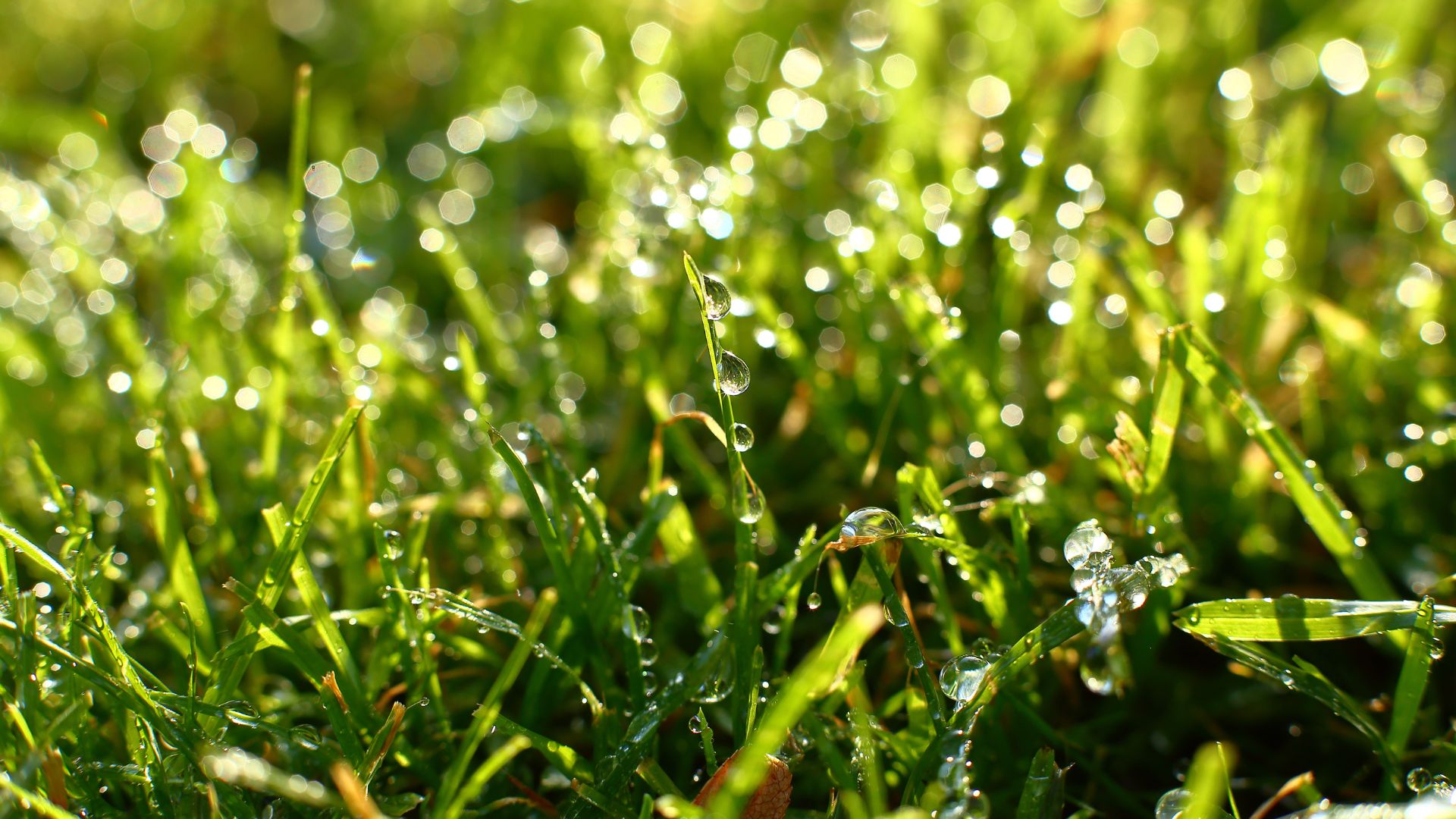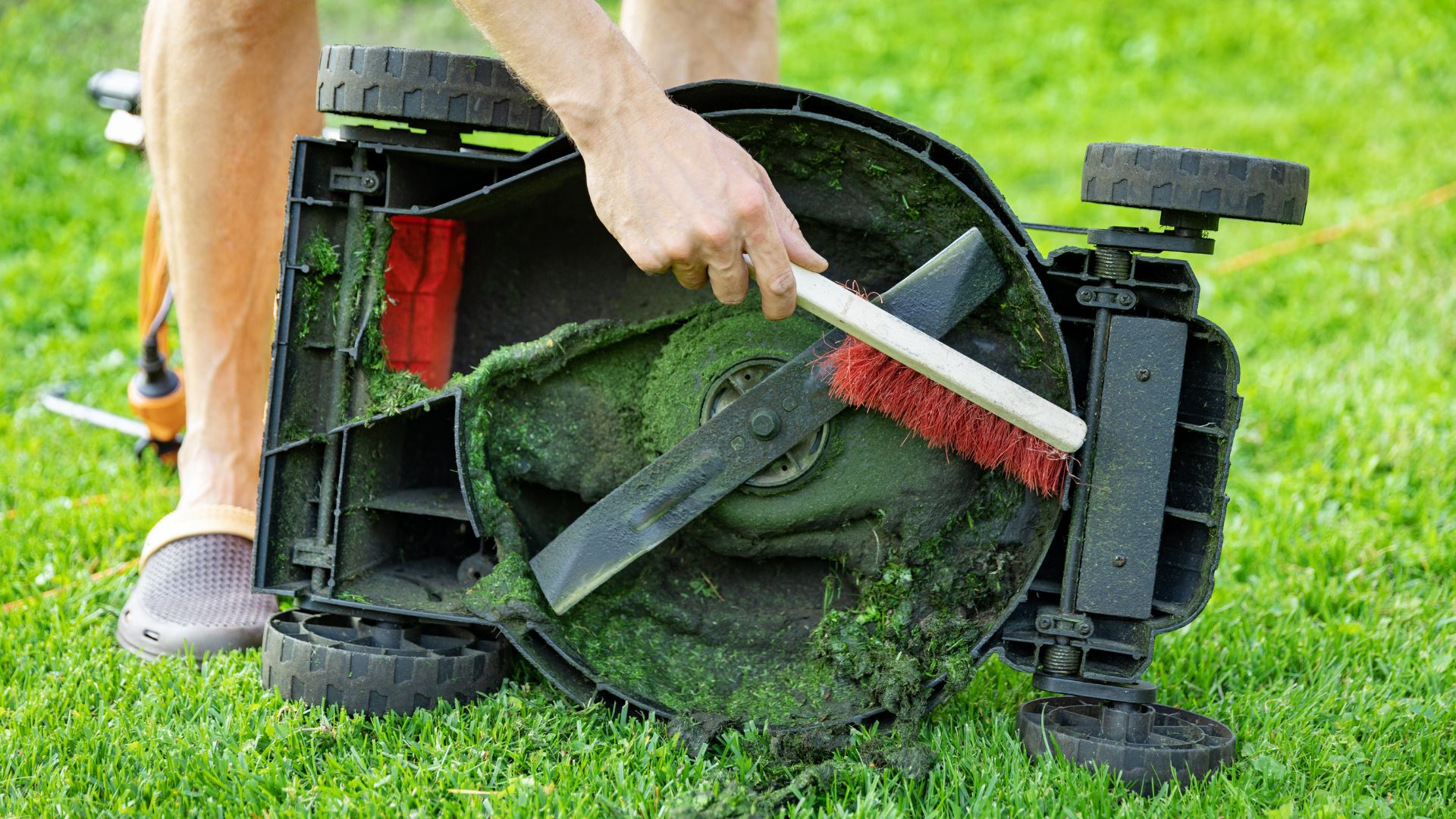How to cut wet grass: 5 tips for safer mowing

There are plenty of reasons why you shouldn't cut wet grass, but sometimes it can be unavoidable. You may live in an area with a lot of rainfall and not often have the luxury of a dry, mower-ready lawn, or perhaps you're expecting company and need to neaten up your yard before they arrive.
Mowing lightly damp grass on a single occasion probably won’t lead to long-term problems, but it’s still good to avoid it as much as possible. If you do find yourself having to cut wet grass, either because the weather has been consistently rainy or because you’re otherwise unavailable, then there are a few steps you can take to minimize the damage.
How to cut wet grass
1. Wait as long as possible to mow

If you can’t wait until the grass is fully dry, you should still wait as long as possible before you begin mowing. Damp grass will have less moisture on the surface of the blades than soaking wet grass, which means less overall damage to your lawn and your tools.
In practice, this will often mean waiting until the morning dew or overnight rainfall has had the chance to evaporate, meaning you'll be better off waiting for the afternoon to break out your lawn mower, or set your robot lawn mower on the task.
2. Sharpen your mower blades

Wet grass is tougher to cut, and taking blunt lawn mower blades to a damp lawn will lead to an uneven finish and breakage to your grass, which will damage it in the long term.
Make sure your lawn mower has extra sharp blades before you begin. This will increase the effectiveness of the mower and reduce the risk of tearing and pulling at the grass. Unsure how to sharpen lawnmower blades? We broke it down into 9 easy steps.
3. Discharge the clippings

After mowing your lawn, you have a few options for what you do with the resulting clippings. Mulching is a popular choice, but not a good idea if the clippings are wet. Similarly, you shouldn’t bag the clippings as wet grass can get stuck to the interior.
Get instant access to breaking news, the hottest reviews, great deals and helpful tips.
Instead, use the discharging setting and create a clear row of clippings that you can then manually remove after mowing. This will minimize the amount of wet grass left on the surface of your lawn, which can suffocate your grass.
4. Wipe down your mower after use

Don’t wipe down your mower while it’s still turned on, as this can cause injury. Instead, if there are clumps, turn off your mower before declogging the blades and wiping down the surfaces of your mower.
In particular, take care to thoroughly wipe and dry the underside of your mower, as leftover clippings and moisture can quickly lead to mold and disease. These will then be transferred back to your lawn when you next use the mower. So, be sure to remove any possible traces of grass or water after mowing.
5. Raise your mowing height

If you absolutely have to cut your wet grass, it's a good idea to put your lawnmower blades on the highest setting. This will trim the top of your grass to tackle the worst of the growth, and allow you to return to your lawn at a later date to finish the task when your grass is dry.
Raising your blades will reduce the strain on your mower, but it will also mean that any damage your grass sustains can be trimmed away easily when you finish the job during a dry spell. This means your lawn will be less likely to pick up any long-term issues.
More from Tom's Guide

Despite making her home in urban metropolises, Madeleine Streets has been nurturing a green thumb for decades.
Raised by a garden designer, she is putting that childhood education to use by helping others learn how to make their garden bloom, while filling her own New York home with cat-friendly plants.
When not writing about gardening and the outdoors, Madeleine loves to cook, study wine and borrow books from her local library.
- Millie FenderManaging Editor, Homes
